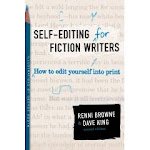Writing a one-page (or even two-page) synopsis is an art form. In some forty-something single spaced lines, the author must introduce the characters, setting, central conflict, spiritual thread, and plot development that ends in happily ever after.
• Characters: Say good-bye to the luxury of spending half a page telling the characters’ back story. Introduce them, and their conflicts, in action. Here is a paragraph from one of my novella proposal that manages to do this in succinct fashion:
Major Troy Brennan, ret., comes to Christmas, Florida, shortly before Thanksgiving for a specific purpose: he wants to find “Aranda H.,” the army widow who’s been sending him Christmas cards for the past five years—always signed “Merry Christmas, with love.”
• Setting: This is often done earlier in the proposal, in introducing the anthology concept. Historical proposals usually include a line at the beginning of the synopsis giving the place and time period: “Breading, Texas, a fictional town in East Texas, 1884” (from The Face of Mary in A Woodland Christmas)
• Central conflict: Although the plot of a novella is simple of necessity, there still must be a clear reason why the hero and heroine don’t fall into each other’s arms. In the first example, Randi’s response to Troy’s proposed visit? Simple. She panics.
Ever since her father deserted her as a child, she’s steered clear of romantic entanglements, with the exception of her husband who helped her get through the dark days when her father left. And even if she was interested, her newly-adult son, Mike, a high school senior, is getting into trouble faster than she can get him out.
This paragraph not only clarifies the central conflict—Randi doesn’t want romance—it explains why and sets up the plot developments that will take place.
• Spiritual thread: With Barbour, include an appropriate Bible verse with the synopsis: King James for historical proposals, New International Version for contemporary. Then at some point(s) in the synopsis, show the connection between the verse and the story. In The Face of Mary (A Woodland Christmas), the hero is looking for inspiration as he paints Mary’s face. His mentor counsels him “that he couldn’t do better than to look for a woman like the mother of Jesus.”
• Plot development: For Christmas novellas, this can often hang on the timing of the Christmas season. The Face of Mary begins with Thanksgiving and lasts through Christmas, tying in the plot with the pastor’s messages about Mary during the Sundays of advent. I’ve also used the duration of a blizzard (six days, in Dressed in Scarlet in Snowbound Colorado Christmas); the weekends of a Christmas play (First Christmas in Christmas at Barncastle Inn); and the stops on a Wild West Show tour (Lucy Ames, Sharpshooter in Wild West Christmas) to give structure to the plot.
• Conclusion: As in all romance—happily ever after, engagement or wedding, and can be included in a brief epilogue.
The proposal for Postmark: Christmas sits on Becky Germany’s desk as I write this blog post. Here’s hoping and praying for the best! All the other stories have been contracted/published.
Sunday, February 27, 2011
Sunday, February 20, 2011
When Writing Fiction, Make Sure it’s True
Or at least true to life!
Have you ever read a book and felt like a character wasn’t acting or reacting right?
Maybe you’ve found yourself deep in the story and suddenly you find something happening that was totally unbelievable. These are common complaints from readers and it’s our job as writers to insure that it doesn’t happen in our storey world.
Here are a couple of guidelines to help your story always ring true.
- Take time to get to know your characters. The more you know and understand about who your character is the easier it will be to keep them true to themselves. And a character who is true to herself is always believable.
- Become familiar with your setting. It doesn't matter if your story is set in your home town or on planet Egon if you can’t visualize it neither can your reader.
Whatever you write, don’t fall into the trap of It Really Happened.
We’ve all heard the old saying, STRANGER THAN FICTION. Like most clichés there is more than a modicum of truth within it. Sometimes things that happen in real life just don’t work in fiction.
I got caught in this trap one time. I entered a Flash Fiction contest by retelling a true story about two of our three sons. The younger one, Kirk, insulted his older brother’s girlfriend. Afraid of repercussions, Kirk shimmied up a nearby sapling—well out of reach from his older brother’s wrath—or so he thought. The older brother, Jimmy, proceeded to get a hatchet and cut down the tree, with Kirk still clinging to its uppermost branches. Luckily Kirk wasn’t hurt and the girlfriend’s honor was avenged.
When my entry was returned I was disappointed, and a little surprised, to learn it hadn’t fared well. But the judge’s comments explained why. I’ve kept the comments and shared many a chuckle with my family when we’ve reread them. “Story line is totally unbelievable. No brother would ever treat another in this manner.” So learn the lesson I did—just because it really happened doesn’t make it believable.
Labels:
Edie Melson,
Fiction,
Flash Fiction,
True,
writing
Sunday, February 13, 2011
WRITING THE NOVELLA: PROPOSAL
by Darlene Franklin
Let me begin this post with the sad announcement that alas, Barbour is no longer accepting proposals for novellas in 2012. Let’s pray for success so that they will soon be looking to fill slots for 2013.
Again, as I share these hints, keep in mind that my experience with writing novellas has been with Barbour exclusively. So do your homework and adapt my comments to what your targeted publisher wants.
Of all the proposals a writer must develop, the novella is probably the simplest, pared down to a minimum. That’s not to say it’s easy (is anything about writing?) But the components of a proposal are either shortened or don’t apply. Consider the proposal for Barbour (again, check against your publisher’s requirements):
· A “blurb” page—paragraph about the concept for the anthology, and paragraphs about each novella.
· Author bios
· 1-2 page synopses, with Bible verses, for each novella.
· First chapter only for any unpublished authors (not necessary for authors previously published with Barbour)
That’s it. No planned endorsements, no complete manuscript, no marketing comparison—nothing more than a great idea that is well-executed.
Sunday, February 6, 2011
The Unwritten Contract
Did you know that you have a contract with your reader? You do.
UNWRITTEN CONTRACT
Party of the first part – from here on referred to as THE READER
THE READER agrees to suspend belief and enter the fictional world that’s been created.
Party of the second part – from here on referred to as THE WRITER
THE WRITER agrees to do everything possible to facilitate their remaining, undisturbed, within that world.
What exactly does this legal jargon mean? Let me explain. Have you ever been reading a book or a story and something startles you and you realize you actually felt like you were IN the story? It’s almost like an alternate reality or a dream.
I once attended a workshop by Ron Benrey where he referred to it as the fictional dream. (He has a great book, The Complete Idiots Guide to Writing Christian Fiction.) I’ve also heard it referred to as the fictional bubble. Well, this fictional dream is a good thing for the reader and we want to avoid doing anything that can jar them from this dream world. Trust me, there are plenty of things in the real world to jar them awake. It means that there are certain things we do or DON’T do, when we write, to make it easier for the reader to
- Use correct grammar. Glaring mistakes can jar THE READER awake, making them wonder why they agreed to read you story.
- Make your Point of View (POV) shifts clear and seamless. When you change POV make certain you have a good reason for doing so.
- Use unobtrusive attributions, like said. Even better, use a speaker beat.
- Avoid overuse of misspelled words to indicate dialect. A little is fine, but once THE READER has the character’s voice in their head, continuing makes the dialogue difficult to read.
- Avoid italics when possible. An occasional italicized word for emphasis is fine, but thought after thought in italics is hard on the eyes. Instead, try to write deeper from the character’s POV. This is sometimes called Deep POV.
- Use all five senses when you write. This will bring the story to life for THE READER
Following these simple guidelines can make it easier for THE READER to immerse themselves in our story.
Subscribe to:
Comments (Atom)











